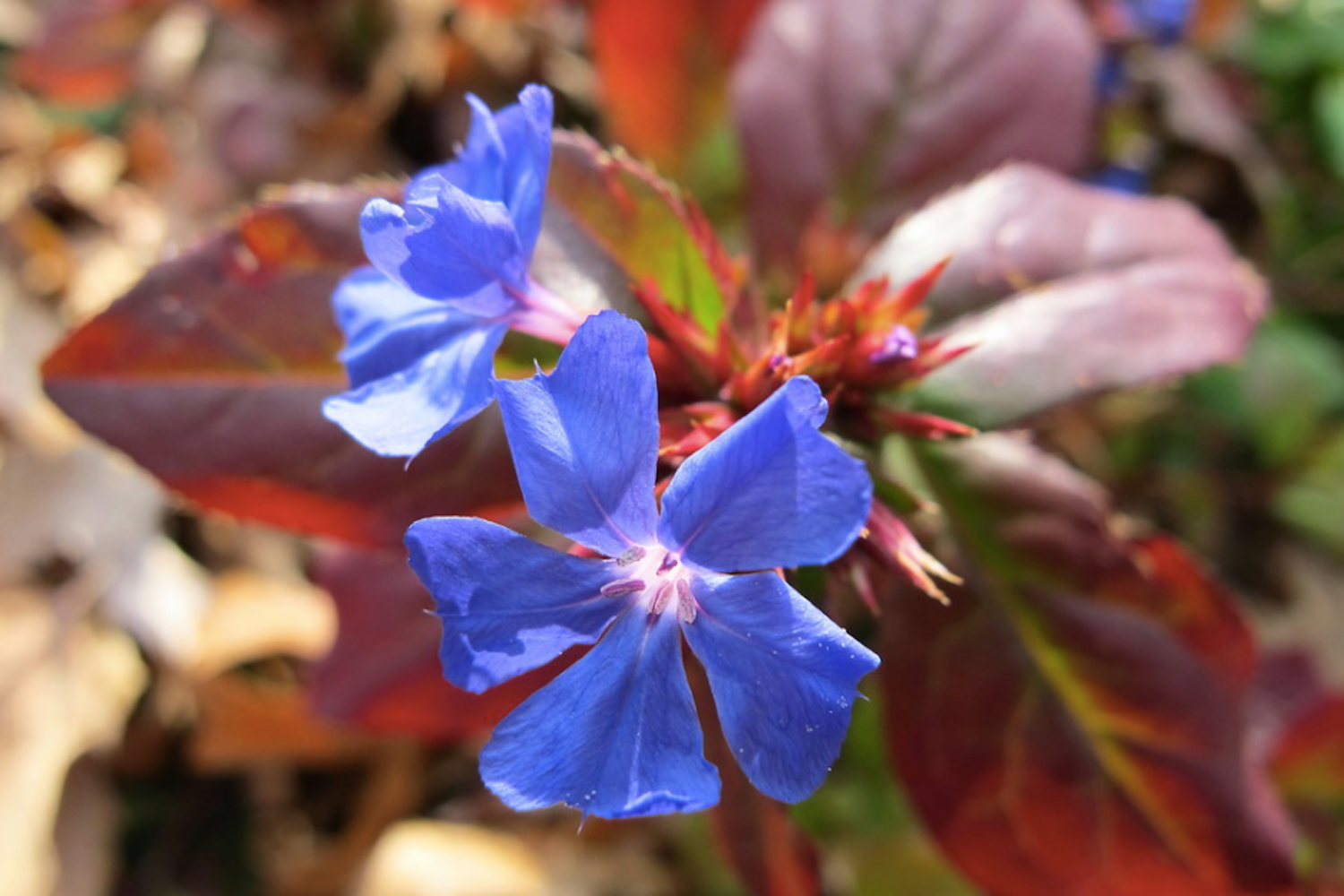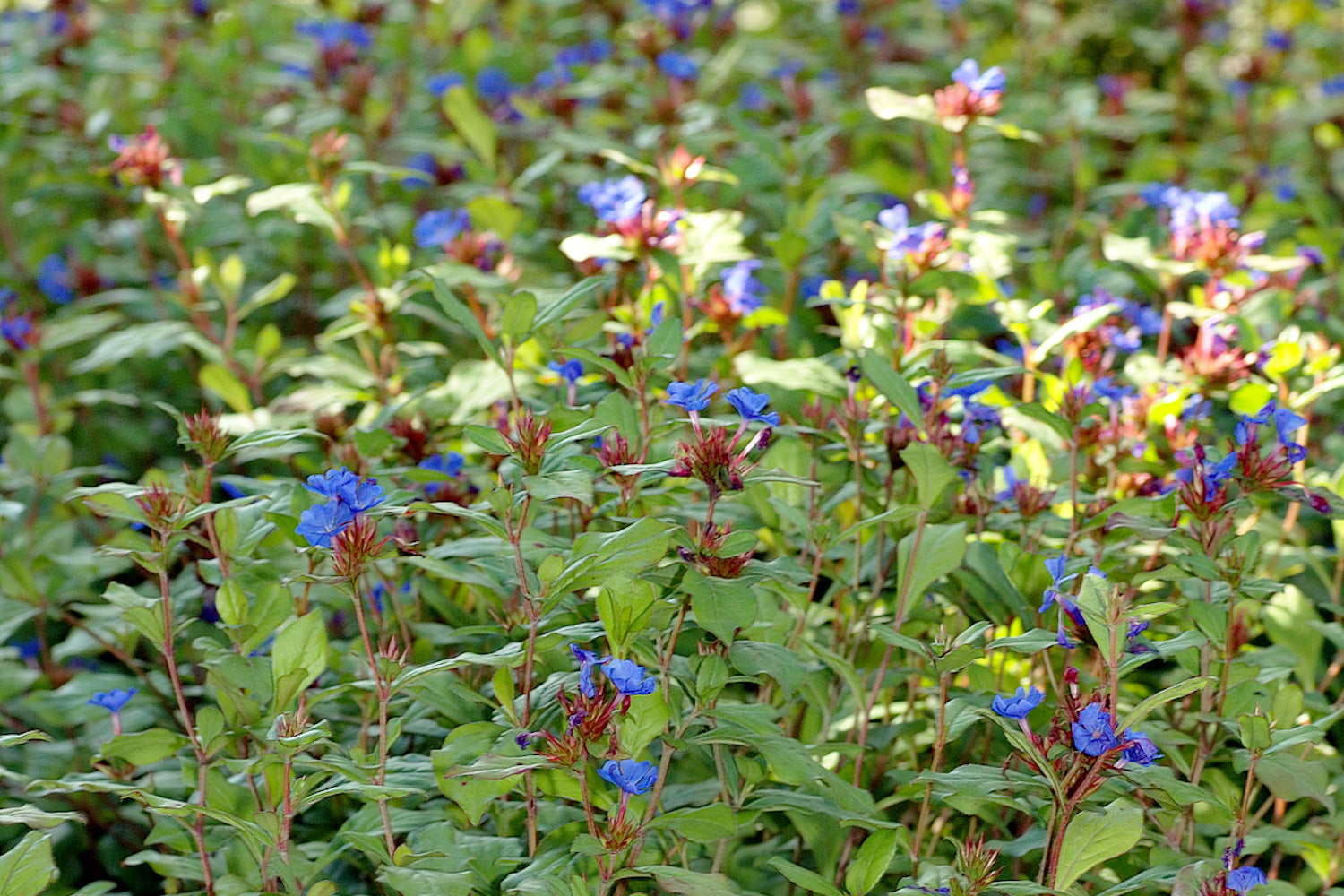Ceratostigma plumbaginoides
Approx. 0.5 litre pot
About this cultivar:
Ceratostigma plumbaginoides, commonly called plumbago or leadwort, is a wiry, mat-forming perennial which spreads by rhizomes to form an attractive ground cover. Oval, shiny, medium green leaves turn bronze-red in autumn. Terminal clusters of 5-petaled, gentian blue flowers appear above the foliage over a long summer to frost bloom period. Flowers resemble those of woodland phlox yet the specific epithet means resembling the genus Plumbago.
I think of it like a Vinca (periwinkle), but with more flowers, yet not evergreen. Christopher Lloyd suggestted planting in a dry stone wall and letting the flowers cascade down....
According to Carol Klein, EA Bowles suggests two possible ways in which Ceratostigma plumbaginoides could have arrived in Europe. The first is that a Mr Smith collected the seeds from the ruined ramparts of Shanghai; the second, which Bowles much prefers, is that seeds were plucked by a soldier as the British Army moved into Beijing.
Has the Royal Horticultural Society Award of Garden Merit.
- Position: Full sun, partial shade
- Soil: Almost any soil, grows well in Ballyrobert
- Flowers: July, August, September, October
- Other features: Royal Horticultural Society Award of Garden Merit (RHS AGM), Grows well in Ballyrobert, Great Ground Cover
- Hardiness: H5 - Hardy in most places throughout the UK even in severe winters (-15 to -10°C), Fully hardy, grows well in Ballyrobert
- Habit: Mat forming, clump forming
- Foliage: Deciduous
- Height: 3 - 25 cm (0.1 - 1 ft)
- Spread: 15 - 90 cm (0.5 - 3 ft)
- Time to full growth: 2 to 5 years
- Plant type: Herbaceous Perennial
- Colour: Green, blue
- Goes well with: --
About this genus:
Ceratostigma is a genus of eight species of flowering plants in the family Plumbaginaceae (leadwort or plumbago) native to warm temperate to tropical regions of Africa and Asia. Common names are shared with the family. The genus name comes from the Greek words keras meaning a horn and stigma from the hornlike projection on the stigma of the flower.
They are flowering herbaceous plants, subshrubs, or small shrubs with the leaves spirally arranged, simple, and usually with a hairy margin. Some of the species are evergreen, others deciduous. It ticks a lot of boxes and this confusion is perhaps part of its charm. The flowers are produced in a compact inflorescence, each flower with a five-lobed corolla; flower colour varies from pale to dark blue to red-purple. The fruit is a small bristly capsule containing a single seed.
Plants of this genus are valued in the garden for their late summer flower colour and their autumn leaf colour. The flowers often show when the leaves are turning colour, which creates an unusual effect! More confusion, sorry, charm!
Will grow in most places that isn’t waterlogged or a desert, but does like a warm sunny spot if possible. Great on pots on steps, the corners of beds or along a path.
Ceratostigma has been listed as one of the 38 plants that are used to prepare Bach flower remedies, a kind of alternative medicine promoted for its effect on mental and emotional health. But we stick to the garden for our mental and emotional health.










